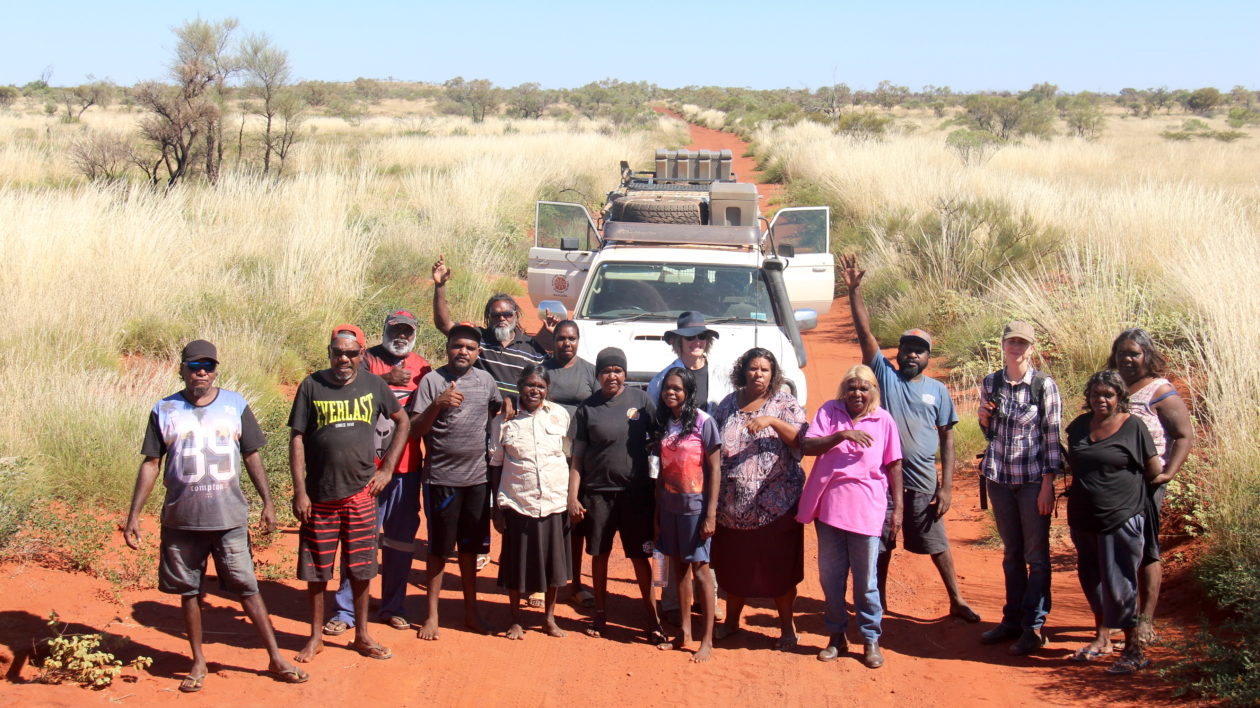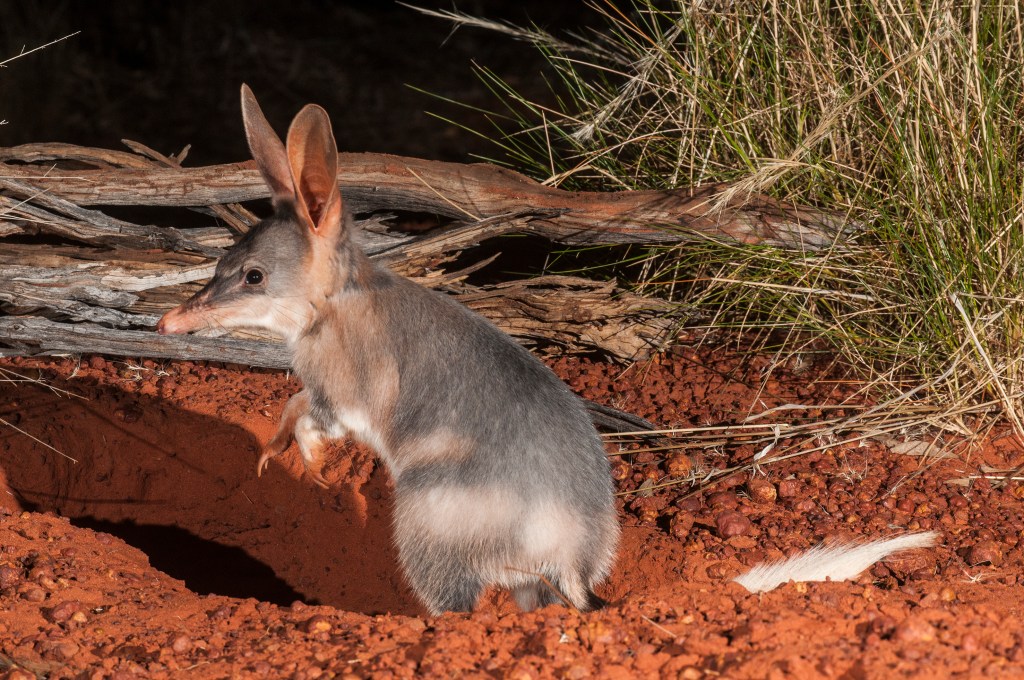Australian scientists and indigenous rangers have devised a new method to incorporate indigenous knowledge about a threatened desert marsupial — the greater bilby — into predictive species distribution models.
Aboriginal and Torres Strait Islander viewers should be aware that this story may contain images or references to people who have passed away.
The Gist
Researchers from the University of Melbourne and The Nature Conservancy, together with Martu indigenous rangers, designed a new method to model the distribution of the greater bilby, a threatened and culturally significant marsupial species in Australia. The research is the first of its kind to incorporate indigenous knowledge into predictive species distribution maps.
As part of ongoing cultural and conservation work, Martu rangers survey their country for tracks and scat left by bilbies, known as mankarr in the Martu language. Researcher Anja Skroblin, of the University of Melbourne, combined that survey data with traditional knowledge from Martu elders about where bilbies are found on country and what habitat types they prefer.
“From that mapped information, we can create models that predict places beyond Martu knowledge where bilby might occur in the wider landscape,” says Skroblin. “The models look at the environmental conditions where bilbies are (or are not) present, and then use that information to extrapolate beyond the survey sites based on the types of environmental conditions across the landscape.”
The Big Picture
The Martu people are the traditional owners of a large area of arid lands in Western Australia, and they were some of the last indigenous Australians to make contact with Europeans. Like other Aboriginal Australians, they have lived on their lands for tens of thousands of years and possess a deep knowledge of the local ecology and wildlife.
Australia has some of the highest rates of mammal extinction anywhere in the world, and many of the country’s threatened species—like the bilby—are found on indigenous land. Incorporating indigenous knowledge into monitoring is critical for the success of conservation efforts, and yet it’s rarely taken into account with species distribution models.
“There are lots of different components of what we think of as indigenous knowledge,” says Skroblin. Some fit easily into existing species distribution models, but other kinds of information are more difficult to incorporate.
“Species distribution models can be really useful when we are trying to predict where animals might occur across a landscape” adds Skroblin. That information can be used to help select sites to monitor for species, or to identify good-quality habitat for protection or other management actions.

The Takeaway
These predictive distribution models are just one element of a larger project to monitor bilby populations across Martu country. “Bilbies have disappeared from a lot of Australia, and they are now found only in the northwestern part of their former range,” says Skroblin. “Martu country sits right in the middle of their remaining distribution.”
Rangers have located healthy bilby populations in many parts of Martu country, but the distribution models suggest that populations have likely declined in some areas—an insight only revealed by including Martu knowledge in the models. Those findings align with both Martu observations and scientific data showing declines to bilby populations farther east.
Using these distribution models, Skroblin and the Martu rangers designed a monitoring program to track bilby populations. That information will help Martu care for bilby through traditional land management practices, like burning. Skroblin explains that by burning parts of the landscape at the right time, they can increase food resources for bilby and other wildlife, as well as help protect them from feral cats.
“The Martu communities really want to care for the bilby,” says Skroblin, “so it’s important that we work collaboratively, understand their needs, and design a monitoring program that suits Martu and the way they want to manage their country.”




This is the best animal and everyone needs to help make money to make more fences for the bulbils to be safe and people need to learn how to cool burn
Thank you for the information on a little known animal. Even more important is the use of indigenous people’s knowledge to further conservation of this species and others….I hope this is used through out Australia and the rest of the world…especially South America, Malaysia. and New Guinea. What the western world thinks are new species have been know to locals for Centuries.